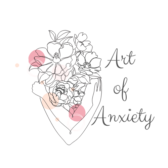Learning how to feel your feelings is a skill that often gets neglected. It can take an active effort to connect with emotions and let the feelings flow through us.
If you’ve spent a large part of your life pushing your feelings down, it can be hard to actually feel your feelings. Something that should be natural becomes incredibly hard because of our behavioral patterns and how we have programmed our own brains. It can also come down to a lack of understanding of our own emotions.
Feelings become scary. Feeling your emotions can feel terrifying. So we resist. They build up, and then they get stuck inside of us.
If we’ve experienced trauma, learning to feel emotions becomes essential.
Step By Step Guide on How to Feel Feelings
When it comes to feeling feelings, it can be useful to go through it in steps. This process guides you through the different aspects needed to feel your emotions.
It is a journey, from sensing the feeling to identifying and naming the feels and finally allowing the emotion to flow through you.
Step 1: You Feel Off
Ask Yourself: How do I feel?



Feelings can often seem like they appear completely out of the blue. One second, you’re fine, and then the next, you aren’t. Often, we don’t understand what triggered us immediately, and it requires thought and reflection to properly understand.
The cycle of emotions usually starts when an unpleasant feeling arises. You begin to feel off or uncomfortable, sensing that something isn’t quite right. Often, things escalate from here.
Instead of immediately pushing this feeling away or burying the emotion beneath distractions, take a moment to acknowledge it. This is the critical first step towards understanding and processing your emotions.
One common response to emotional discomfort is the rapid formation of an inner narrative. Phrases like “I’m unlovable,” “I’m a loser,” or “It’s all my fault” may start swirling in your mind.
Rather than simply feeling your feelings, you may find yourself thinking your feelings. It’s crucial to bring awareness to the way you’re speaking to yourself, as this self-talk has a more profound impact than you might realize.
Step 2: Identify the Feeling
Ask yourself: What Emotion Am I Feeling?

When it comes to learning to feel, it’s extremely valuable to learn to identify what you’re feeling. If you’re not sure how to identify your emotions, you could use a feelings wheel.
The key here is to let the emotion exist without judgment. Refrain from labeling your emotions ‘good’ or ‘bad, they are merely signals from your inner world. Even though some emotions like anger or sadness may cause uncomfortable sensations to arise, it’s vital that you remember that emotions are not good or bad. They just are.
As you identify the feeling, consciously redirect your mind away from the accompanying story or narrative. Put aside the thoughts and reconnect with the physical sensations in your body.
Step 3: Locate the Feeling
Ask Yourself: Where do I feel the feeling in my body?

Once you’ve identified the feeling, the next step is finding that feeling. Conduct a gentle body scan and observe where in your body you’re experiencing physical sensations.
Emotions can manifest as things like a lump in your throat, tightness in your chest, racing heart or a rapid, shallow breath.
Once you’ve found where the emotion is vibrating, breathe into those feelings or sensations. Allow it to be. Sometimes, this might lead to tears or a subtle trembling. These physical responses are your body’s way of processing and releasing the emotion.
Step 4: Listen to the Feeling
Ask Yourself: If my feeling could talk, what would it say?

Feelings are messengers, sending us important signals. So, it can be useful to take the time to listen to your feelings. What are your emotions trying to tell you?
This could be things like “I feel uncomfortable”, “I feel unsafe”, “I feel forgotten”, “I feel neglected”, “I feel let down”, or “I feel abandoned”. Pay attention and listen to the subtleties.
Your mind might attempt to return to thought or story mode at this point. When this happens, gently redirect your awareness back to your body. Feel the emotion rather than think about it.
Step 5: Investigate the Feeling
Ask Yourself: What might this feeling be teaching me?

Curiosity can be a powerful ally in the journey of how to feel emotions. So, get curious.
Approach your emotions with a sense of inquiry. What are they trying to communicate? Look at potential triggers and look at what boundaries are being infringed upon.
Ask yourself things like, “When have I felt like this before?”, “What triggered this reaction?”, “Who triggered this reaction?”, “What about this emotion is familiar?” “What about this emotion feels different?” “When was the last time I felt this way?”
Put on your investigative gear, grab your magnifying glass and ask questions.
Step 6: Address the Feeling
Ask Yourself: What Do I Need Right Now?

Our feelings demand attention. They want to be felt, and it takes energy to prevent ourselves from feeling them. If we see feelings as the enemy, we fight them. We need to reframe that perception and see our emotions as something that needs to be addressed, we can rather ask ourselves what we need.
Think about how you dealt with the feeling the last time you experienced it and use that as a starting point.
If we are angry, perhaps we need space. During feelings of sadness, our body may be demanding compassion and gentleness. If we feel disappointed, we may need understanding. Try to determine what your feelings are trying to tell you, and then take steps to meet those needs.
What Each Feeling Could Be Telling You
Sadness could be telling you that you need to cry.
Loneliness could be telling you that you need a connection.
Shame may be asking for self-compassion.
Resentment may be asking you to forgive.
Emptiness could be telling you that you need to do something creative
Anger might be telling you to check in with your boundaries
Anxiety might be telling you breathe.
Stress could be asking you to take one step at a time.
Step 7: Allow for Your Feeling
Ask Yourself: What tiny step can I take to meet that need?

To feel feelings might be as simple as taking deep breaths, remaining present in your body, and allowing the feeling to be. Let the feeling exist and trust that it will leave. Like waves, emotions rise and fall. Observe how they change and move within you. Recognize that you have the strength to endure them.
Give yourself permission to feel what you feel. Validate your feelings and the reasons behind them. Practice self-compassion by treating yourself with the same kindness and understanding that you would offer to someone else in a similar situation. Consider what you have control over and what you can do to make yourself feel better. Then take into account what you don’t have control over.
If you are overwhelmed by anger, perhaps you need to scream it out or head away from the situation and take some time alone. Sadness often demands tears; let them fall. If you’re irritable, offer yourself time and gentleness. If you’re stressed and overwhelmed, perhaps you need to spend some time practicing self care.
No matter what you’re feeling, consider what you can do to bring joy into your life.
Tips for Feeling Your Emotions

Besides the steps on how to feel your feelings above, there are also some additional tips that you can use:
- Practice Patience: Emotions may not always surface immediately; give yourself time to connect with them.
- Create a Safe Space: Find a quiet, comfortable environment where you can focus on your feelings without distractions.
- Regular Check-Ins: Make it a habit to check in with your emotions regularly, not just when they become overwhelming. Be mindful even of subtle feelings.
- Seek Support: Don’t hesitate to reach out to a trusted friend, family member, mental health services or therapist when you need guidance or someone to talk to.
- Journaling: Writing down your feelings and thoughts can be a powerful way to process and gain insight into your emotions.
How Do You Feel Your Feelings?
Learning to feel your feels is a journey of self-discovery and self-compassion. By embracing your feelings and following steps to feel the emotions. Also, keep in mind that each person has a unique perspective and, as such, experiences emotions differently.
It is your responsibility to ask yourself the question, how do you feel emotions?
By doing this, you can develop a healthier and more balanced relationship with your inner world, ultimately leading to greater emotional well-being.

Kathryn is the creator of Art of Anxiety. She was diagnosed with GAD and MDD at 16 and has been working every day to master the art of anxiety ever since. Her favorite things to do are aerial yoga and hanging out with her cats while reading a good book.




